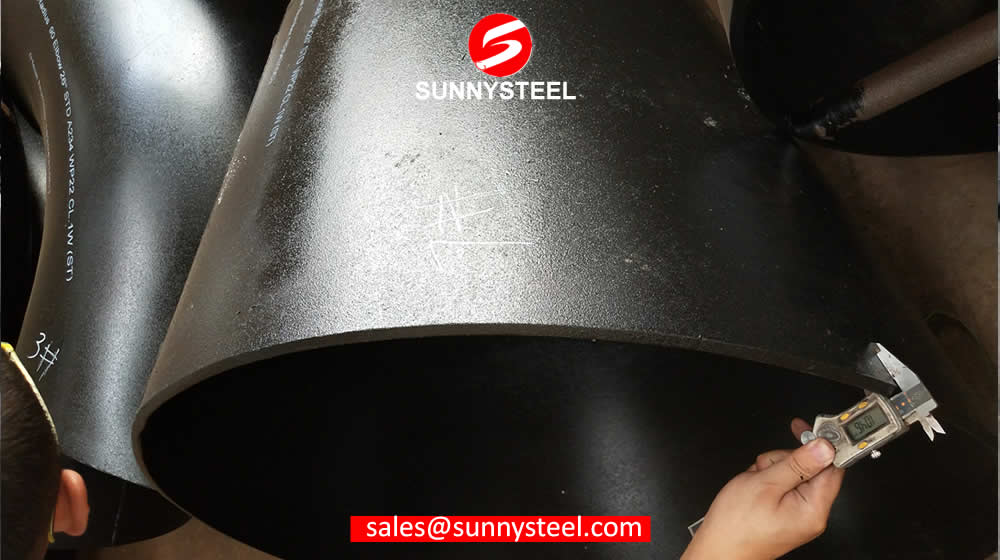ANSI Flange Standards
The American National Standard Institute, ANSI, has been overseeing guidelines and standards for products manufactured through several sectors.
WHAT IS ANSI?
ANSI-approved flanges are used for the industrial market which handles gas, air and steam process systems. Originally formed in 1918, the American National Standards Institute is headquartered in Washington, DC, and is widely recognized as the American organization responsible for overseeing the national standards and conformity assessment system for products, services, processes, systems, and personnel.
ANSI works domestically with American government agencies and organizations, as well as with international entities, to make ANSI standards useful around the world.
Prior to the creation of ANSI, standards for engineering and equipment such as flanges were developed by the American Institute of Electrical Engineers (AIEE or IEEE), the American Society of Mechanical Engineers (ASME), the American Institute of Mining, Metallurgical, and Petroleum Engineers (AIME), the American Society of Civil Engineers (ASCE), and the American Society for Testing and Materials (ASTM International) as members of the United Engineering Society, or UES.
Types of ANSI Flanges
The types of ANSI flanges are: slip on flange, welding neck flange, lap joint flange, plate flange, threaded flange on forge steel, carbon steel, stainless steel, alloy steel and blind flange. The classes of the flanges are the pressure ratings, which is between Class 150 and Class 2500. The dimensions of the flange are determined by the size of the pipe and the class of the pressure, which are required for the flange to be able to withstand water pressure and heat. Temperatures and materials of the flange can withstand pressures from -20 (degrees, Celsius) to 200 (degrees, Celsius).
Purpose
Flanges are used to attach a series of pipes or other flanges together. Some flanges, such as in the oil and gas sector, are required to sustain under high amounts of pressure. ASNI provides standards to flange manufactures to test flanges before they can be marketed to a particular sector.
Significance
ANSI provides standards on flanges depending upon pressure in pounds per second per inch (PSI), according to size in inches of the flange. Pressure and size are dependent upon whether the flange is welded to the pipe, threaded or bolted.
Considerations
Depending on the material the flange is made from, such as cast iron or steel, and the type of threaded material used for fittings, every flange is designated to a particular class. From these class ratings, several requirements, such as pressure-temperature rating, bolt and nut dimensions, coating material and several other factors, make up the standards according to the flange characteristics.
Standards of ANSI Flanges:
The classes for flat face flanges are Class 125 and Class 250. The classes for ring joint flanges, tongue and groove flanges and raised flanges are: Class 150, Class 300 (Class 400 - rarely), Class 600, Class 900, Class 1500 and Class 2500. ANSI flanges are divided into classes, depending on pressure, temperature and the type of material used.
Welding Neck Flanges
- ASME/ANSI B16.5 Class 150 WN
- ASME/ANSI B16.5 Class 300 WN
- ASME/ANSI B16.5 Class 600 WN
- ASME/ANSI B16.5 Class 900 WN
- ASME/ANSI B16.5 Class 1500 WN
- ASME/ANSI B16.5 Class 2500 WN
- ASME B16.47 Series A/MSS SP-44 Class 150 WN
- ASME B16.47 Series A/MSS SP-44 Class 300 WN
- ASME B16.47 Series A/MSS SP-44 Class 600 WN
- ASME B16.47 Series A/MSS SP-44 Class 900 WN
RTJ Flanges, Ring Type Joint Flange
- Dimensions of Ring Joint Facings
- Ring Joint Facings ASME/ANSI B16.5 & B16.47-1
- Ring Joint Facings ASME/ANSI B16.5 & B16.47-2
- Ring Joint Facings ASME/ANSI B16.5 & B16.47-3
- Ring Joint Facings ASME/ANSI B16.5 & B16.47-4
Threaded Flanges, TH Flanges
Slip-on flange
- ASME/ANSI B16.5 Class 150 SO
- ASME/ANSI B16.5 Class 300 SO
- ASME/ANSI B16.5 Class 600 SO
- ASME/ANSI B16.5 Class 900 SO
Lap Joint Flanges
- ASME/ANSI B16.5 Class 150 LJ
- ASME/ANSI B16.5 Class 300 LJ
- ASME/ANSI B16.5 Class 600 LJ
- ASME/ANSI B16.5 Class 900 LJ
- ASME/ANSI B16.5 Class 1500 LJ
- ASME/ANSI B16.5 Class 2500 LJ
Blind Flanges, BL Flange, BLRF




